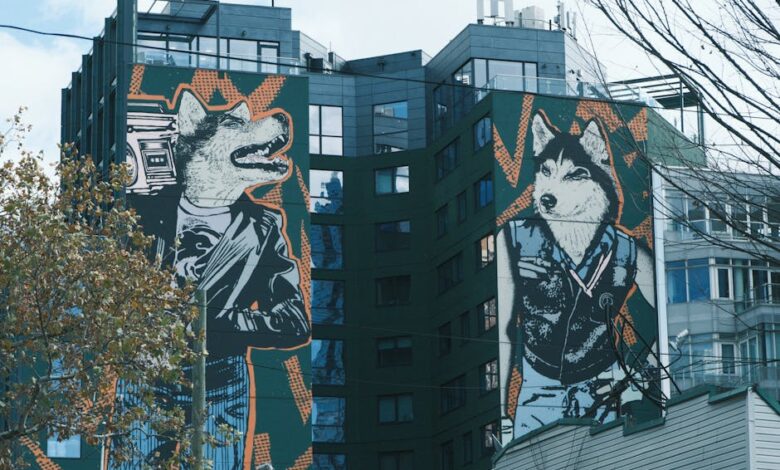The Dawn of Multi-AI Collaboration: A New Paradigm

Remember those early days of AI chatbots? A novelty, perhaps, a slightly clunky but fascinating digital assistant. We’d ping one AI for a quick summary, then switch to another for a creative writing prompt, perhaps a third for some coding assistance. It was a bit like having several specialist friends, but you had to physically go to their separate offices for each query. In a world increasingly defined by seamless integration and collaboration, this siloed approach felt, well, a little outdated. We knew AI would evolve, but few might have predicted the latest leap: what if all your AI specialists could gather in one virtual room, brainstorming and collaborating with you, and with each other?
That future isn’t a distant dream anymore; it’s here. Quora’s AI platform, Poe, has just rolled out a game-changing feature: group chats that bring together up to 200 people alongside a diverse array of AI models and bots. This isn’t just an incremental update; it’s a foundational shift in how we interact with artificial intelligence, moving from individual query-response to truly collaborative, multi-faceted digital teamwork. It’s a bit like assembling your dream team of digital brains, each with their unique strengths, all working on the same problem at the same time. The implications are, to put it mildly, profound.
The Dawn of Multi-AI Collaboration: A New Paradigm
For a long time, engaging with AI has been a solitary affair. You had your chatbot, your prompt, your answer. If you needed a different perspective or a different capability, you’d open a new tab, navigate to a different platform, and start fresh. This process, while productive, often broke the flow of thought and diluted the synergy that true collaboration requires. Poe’s new group chat functionality shatters these old boundaries, ushering in an era where diverse AI models can coexist and contribute within a single, dynamic conversation.
Why Just One AI When You Can Have Them All?
Think about the specialized skills of various AI models. ChatGPT excels at general knowledge and coherent conversation. Claude is renowned for its nuanced understanding and creative writing prowess. Llama models offer powerful open-source alternatives, often fine-tuned for specific tasks. Gemini brings Google’s vast information ecosystem to bear. Each has its strengths, its quirks, its preferred way of processing information and generating responses. Previously, leveraging these distinct advantages meant jumping between interfaces. Now, you can invite them all to the same party.
Imagine you’re trying to brainstorm a new marketing campaign. You could bring in a creative AI like Claude to generate catchy slogans, a logical AI like GPT-4 to analyze market data and competitor strategies, and perhaps a specialized AI bot trained on SEO best practices to suggest keywords. Instead of getting fragmented advice, you get a cohesive discussion, where each AI contributes its unique insight, potentially even building upon the suggestions of another. The result is a richer, more comprehensive output that no single AI could deliver alone.
Beyond the One-on-One: The Power of Group Dynamics
The “group chat” aspect isn’t just about having multiple AIs; it’s about creating a truly collaborative environment. Just as human teams benefit from diverse perspectives, an AI group chat allows for a kind of digital brainstorming that can spark unexpected solutions. One AI might provide a data point, another might reframe the problem based on that data, and a third might offer a creative interpretation. The user acts as the conductor, guiding the conversation, asking follow-up questions, and directing the AIs towards the desired outcome.
This dynamic mirrors the best human collaboration: iterative, adaptive, and always pushing towards a better solution. It’s not just asking an AI a question; it’s engaging in a dialogue with a collective intelligence. This changes the very nature of problem-solving, allowing for real-time synthesis of information and ideas from multiple, distinct AI personalities.
Practical Applications and Unforeseen Potentials
The immediate applications of Poe’s group chat feature are compelling, but the true excitement lies in the unforeseen potentials it unlocks. This isn’t just a niche tool for tech enthusiasts; it’s a foundational shift that will impact a wide array of professions and personal pursuits.
For the Creative Minds
Content creators, marketers, writers, and designers stand to gain immensely. Need to develop a viral social media campaign? Bring in an AI for catchy headlines, another for image concepts, and a third for scheduling and analytics insights. Writing a novel? Have one AI generate plot twists, another refine dialogue, and a third act as a world-building consultant, all in the same chat. The synergy can transform the creative process, making it faster, more innovative, and surprisingly less solitary.
For the Problem Solvers
Developers debugging code, researchers analyzing complex datasets, or business strategists mapping out growth plans can all benefit. Imagine a developer feeding a tricky code snippet into a group chat with a Python-specialized AI, a general problem-solving AI, and an AI that can articulate best practices. The AIs could collectively identify errors, suggest optimizations, and even explain the underlying logic, providing a multi-faceted diagnostic process far superior to a single AI’s output.
For Everyday Explorers and Learners
Beyond professional applications, think about personal learning or hobby projects. Planning a trip? Have one AI research flights, another suggest cultural activities, and a third plan an itinerary based on your preferences. Learning a new language? Engage with an AI for grammar correction, another for conversational practice, and a third for cultural context. The potential for personalized, dynamic learning environments is immense.
The beauty of this system is that it allows us to leverage the very specific strengths of different models without the friction of context switching. It’s about getting richer, more nuanced, and ultimately more valuable outputs by orchestrating a symphony of digital intelligences.
Navigating the New Frontier: Tips for Effective Multi-AI Chats
Like any powerful tool, mastering Poe’s group chat requires a bit of finesse. You’re no longer just conversing with one AI; you’re conducting an orchestra. Here are a few tips to get the most out of this exciting new capability:
- Know Your AIs: Understand the strengths and weaknesses of the models you’re inviting. Is one better for creative generation, another for logical reasoning, another for summarization? Assign roles or direct questions to specific AIs where appropriate.
- Be Explicit with Prompts: When a general question might suffice for a single AI, in a group chat, it often helps to be more specific. If you want a particular AI to take the lead on a certain aspect, explicitly state it in your prompt. For example, “Claude, brainstorm some creative ideas for X. GPT-4, provide data-backed insights on market trends related to X.”
- Iterate and Refine: Don’t expect perfection on the first try. Use the group dynamic to your advantage. If one AI gives a good starting point, prompt another AI to expand on it, or ask a third to critically evaluate the suggestions.
- Manage Context: While the AIs share a chat, ensure that key information or directives are clear and repeated if necessary, especially if the conversation branches significantly.
- Experiment! This is a new frontier. Play around with different combinations of AIs, different prompting styles, and various use cases. The most exciting discoveries will likely come from unexpected experimentation.
The ability to curate and lead a team of AI models marks a significant evolution in our relationship with artificial intelligence. It shifts the user from a passive recipient of information to an active orchestrator of diverse digital intelligences.
A Collaborative Future Awaits
Poe’s introduction of multi-AI group chats is more than just a new feature; it’s a bold step towards a future where human-AI collaboration is not just about efficiency, but about true synergy. It’s about building a digital brain trust tailored to your specific needs, capable of tackling complex problems from multiple angles simultaneously. We’re moving beyond simply asking AI to do tasks for us, and into a realm where we can genuinely collaborate with them, leveraging their collective strengths to unlock unprecedented levels of creativity, problem-solving, and innovation.
This isn’t just about making our digital tools more convenient; it’s about fundamentally reshaping how we think, create, and interact with information. The future of work, learning, and discovery will increasingly involve intelligent collaboration, and Poe’s latest innovation has just thrown open the doors to that exciting new world. What will you create when your AI dream team is just a chat away?





